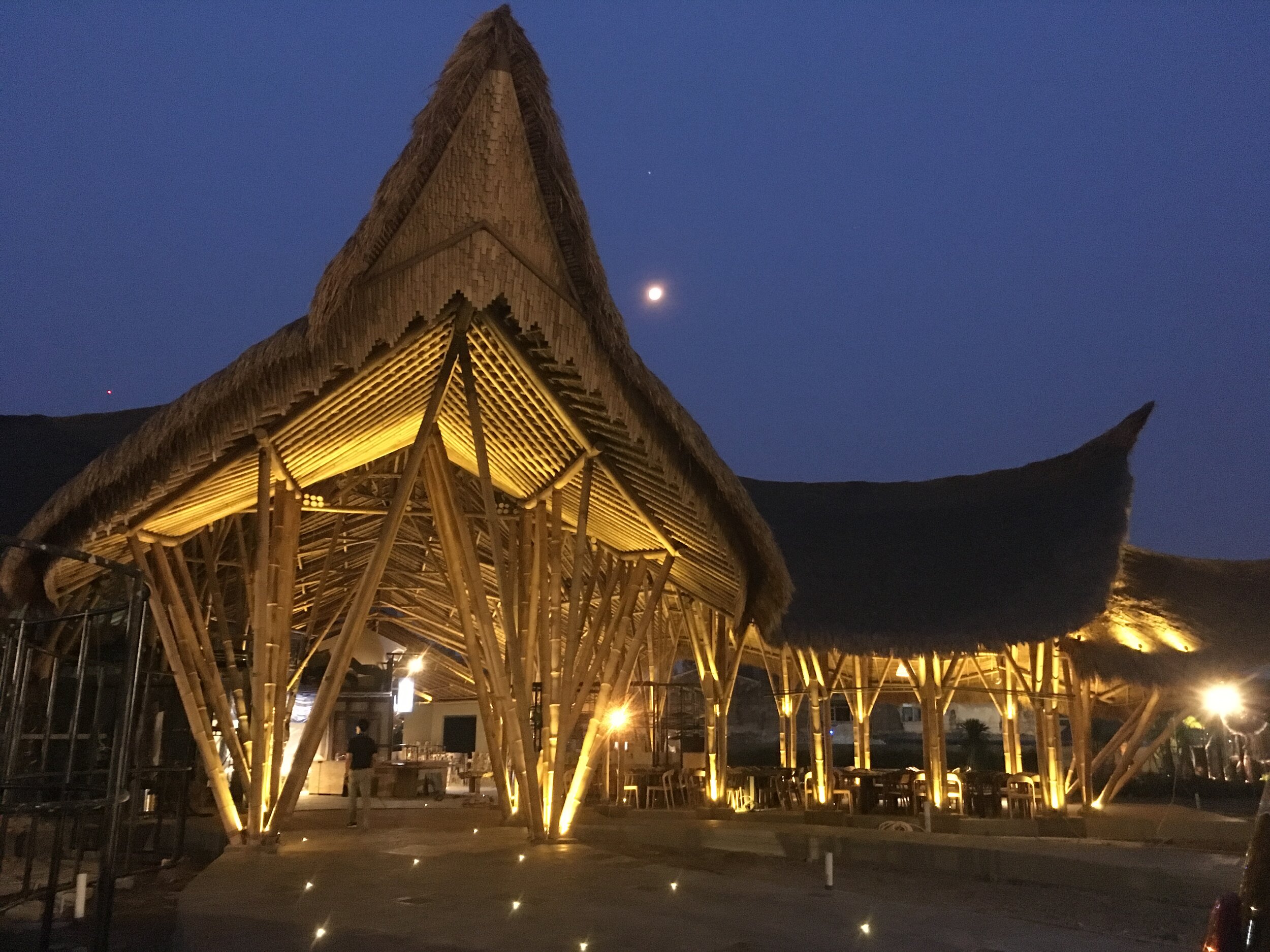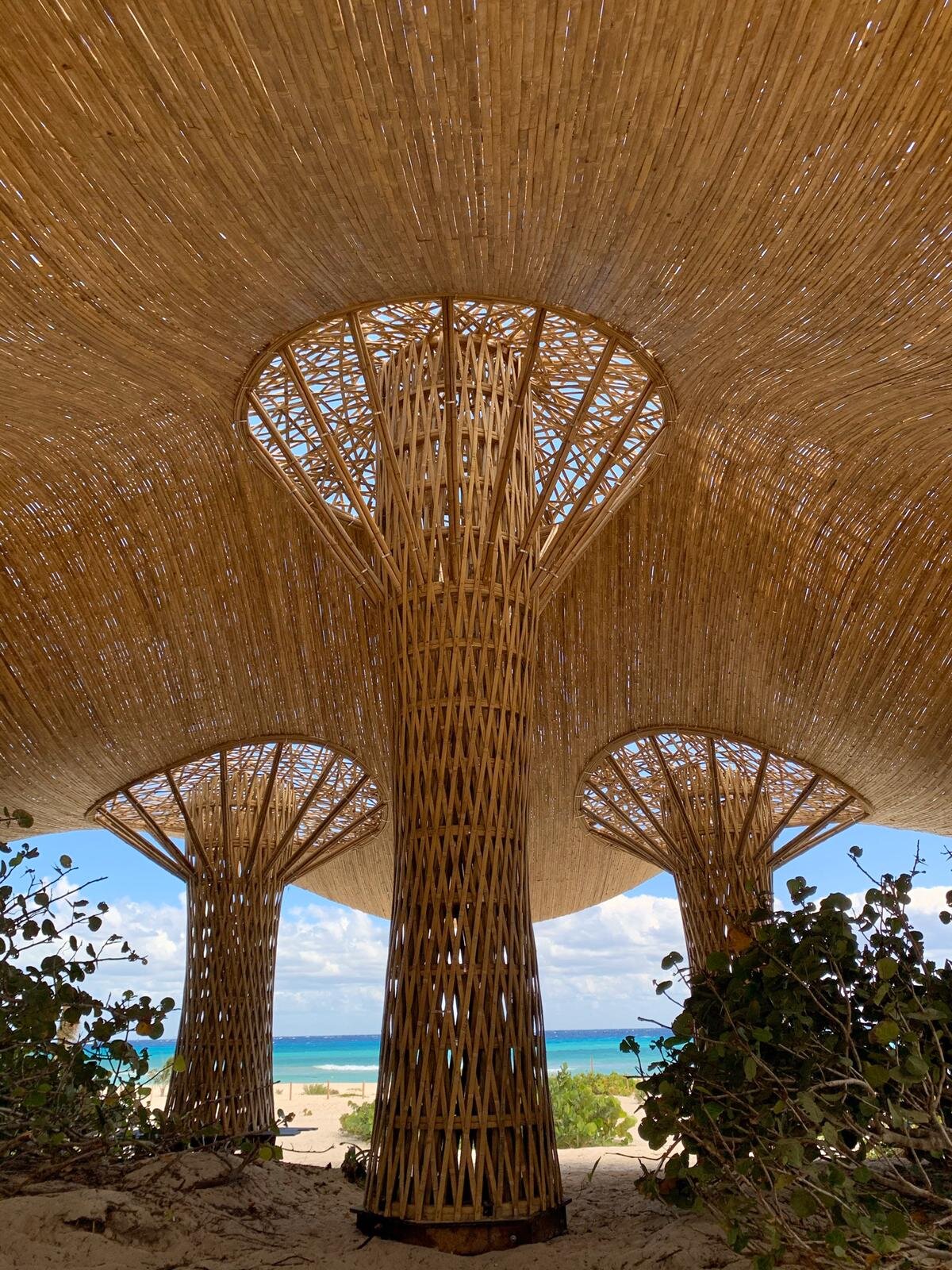Asali Bali - bamboo construction engineering
Olivier Betting heads up Asali Bali, an organisation that we have been collaborating with on some of our architecture projects more recently on bamboo structural engineering and project construction. Asali Bali has grown over the years and they have established themselves in bamboo treatment, construction and engineering in Indonesia and overseas with the projects that they have delivered. Check out their newly launched website (links at the end of the article) for more information.
Questions:
1. Tell us about yourself, the company, how it was started and why it exists.
As a structural engineer, i've been attracted to bamboo material for its great technical performances and high sustainability qualities. Asali Bali was created in 2003 as a furniture company and have evolved to bamboo buildings in 2009 focusing on ambitious bamboo structures to change the mentalities and open perspectives on bamboo construction and material. In 2017 we intergrated a structural engineering team, proposing structural bamboo calculations and verification in order to contribute to the development and professionalism of bamboo industry.
2. Which regions do you work in and Why Bamboo?
Our activity is 50 % located in Bali, 40% the rest of Indonesia and 10% abroad including projects in Seychelles, Congo and few more coming in India, Maldives and Fiji.
Bamboo grows naturally in most of tropical areas in the world as well as tempered climate and can be treated locally to reduce ever more our carbon foot print.
3. Tell us about the sourcing, harvesting and treatment/production methods that the company uses.
All the bamboo we use are from Bali. The bamboo petung comes from Tabanan area and the tali from Kintamani and Bangli area. We use borax boric treatment during 1 week for the bamboo preservation. We were previously using Neem oil based product and still working on it in order to optimize its properties and durability.
4. Who constructs the buildings and if you can elaborate on the construction process especially the artisans and special skills required, if any ?
The bamboo buildings are constructed in coordination with the design team, site project management and the craftsmen onsite. We are located in the village of Belega specialized in bamboo construction and bamboo craftship in Bali. 90% of the villagers work with bamboo. The teams are organized traditionally, following a long process of learning with their family and friends, taking little by little more responsibilities in the projects. This intergenerational collaboration contribute to preserve the human relations and connections, contributing to the transmission of knowledge between the youngster and the more experience craftsmen generation.
5. Is there anything that you want to share about the production process of bamboo before it is sent for construction?
All bamboo are selected to be straight, with no previous insect attack, from 3-5 years old and properly dry (less than 20% moisture in the bamboo). The full process of treatment, preparation and drying before delivery is around 3 weeks to 1 month.
6. What are the main challenges in bamboo construction and how are you approaching these challenges?
Bamboo is one of the oldest construction material and also one of the least developed in the construction industry. Due to the fact that is a natural and non manufactured product, we have to adapt our way of designing with bamboo. Even though there is no bamboo standard in Indonesia and most countries in the world, we follow INBAR (International Bamboo and Rattan) recommendations based on Eurocodes standards calculations for wood. By testing the bamboo with Udayana University, we aim to contribute to a better knowledge and approach of the material reducing the safety factors and we know better its properties for each species used. By doing so, bamboo standards would become the norm such as for the other building material and would be able to be more promoted and use for large scale projects.
7. What is your favourite all time bamboo building/designer and why?
Designing a building is one of the most complex and interesting exercises, because it has to integrate a lot of factors in a social, technical, economical aspect and aesthetics as well. So we have to consider the tradition, history of the place, the orientation and feng shui regarding the sun, rivers, mountains around, the backround and experience of the client to fit with its personality and create an original and functional aesthetic regarding environmental and economic decisions.
As a structural engineer, i would enhance the efficiency of the structure responding to all these parameters to make the most adapted building. We have to rethink and make evolve the way we look at bamboo material and be open to its multiple possibilities.
For bamboo building i would name the last INBAR bamboo building, finished in 2019 in Beijing as it is the best contribution to the development of bamboo industry and perception from the public toward this material.
For bamboo designer i would name Pablo Luna for its creativity and simplicity integrating all his soul into its design inspired by natural shapes and elements which are usually already smart from a structural and aesthetic aspect.
8. What makes Asali Bali different and unique?
When I worked as a dive instructor, the most important thing that they teach us about the industry its that the competitors are not the other people doing the same work but all the activities around. There is maybe 5-10% of divers, so why compete on this 5-10% instead of collaborating together and bring more awareness in order to convince the 90-95% others to use more sustainable and ecological material. I believe that working all together in a professional manner, it will be profitable for the all bamboo industry in the long term as our contribution to the preservation of the environment. Alone we are not going to solve the problem of our world, but together we can show the example with proven sustainable solutions.
https://www.facebook.com/Asalibali/
https://www.instagram.com/asali_bali/
https://www.linkedin.com/company/asali-bali/












